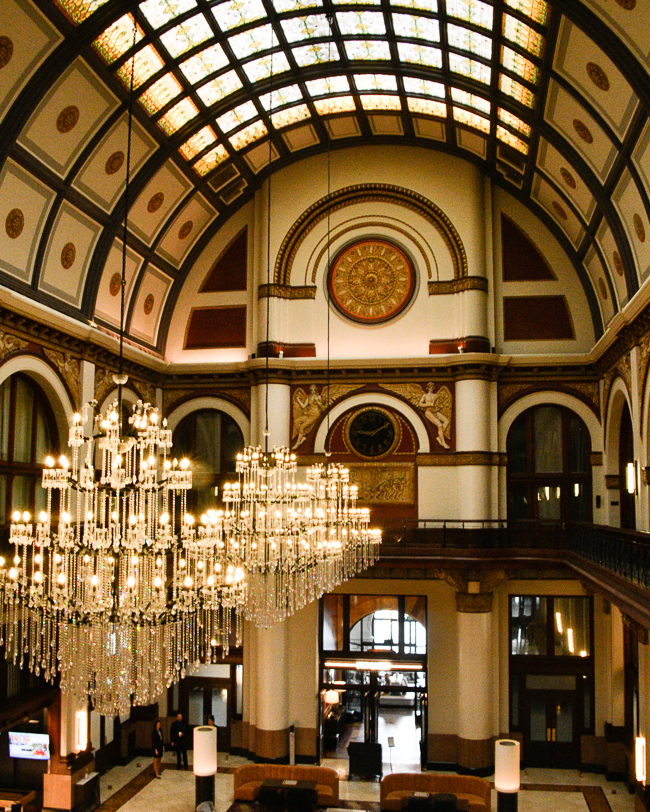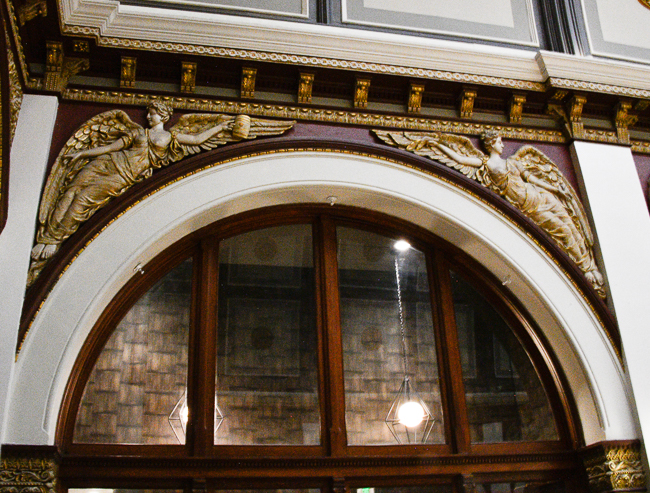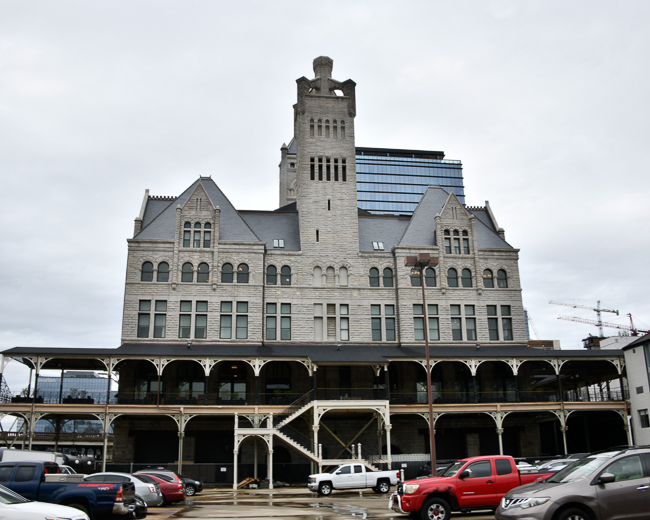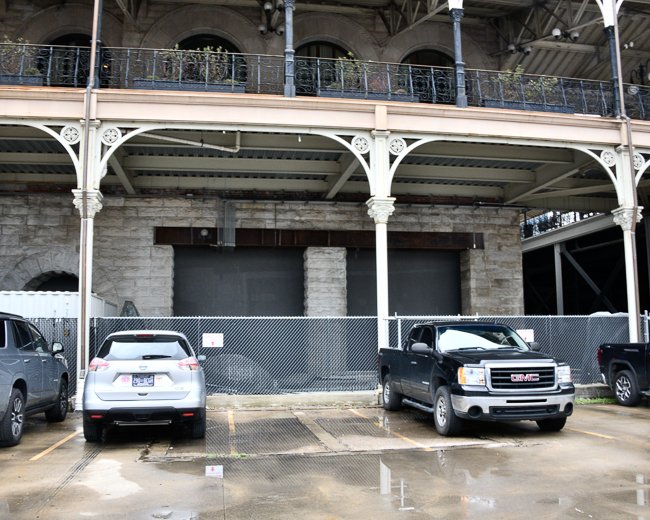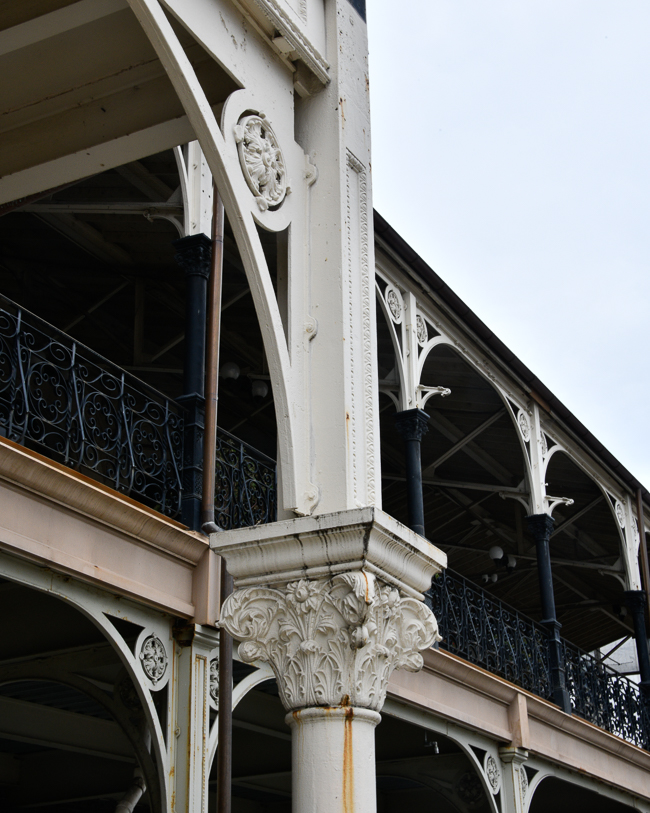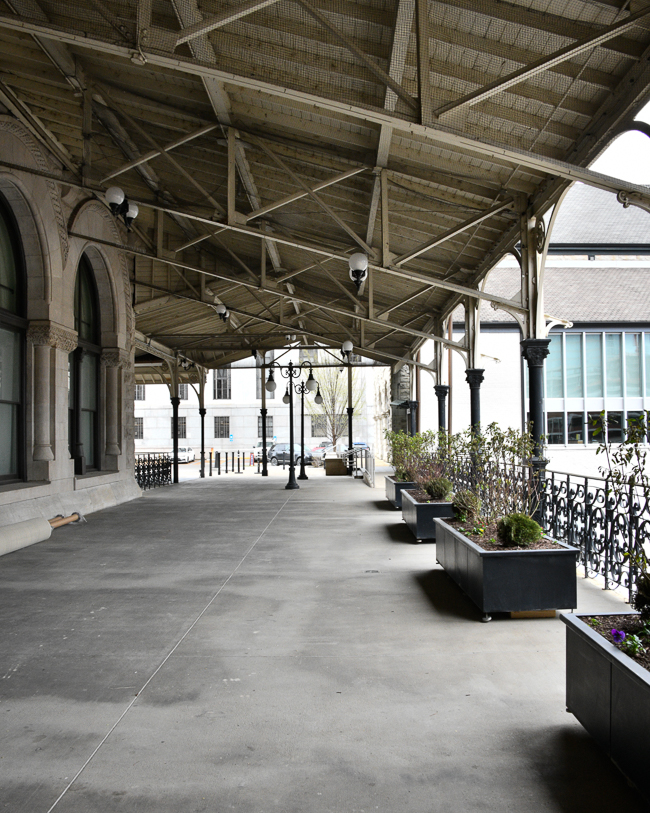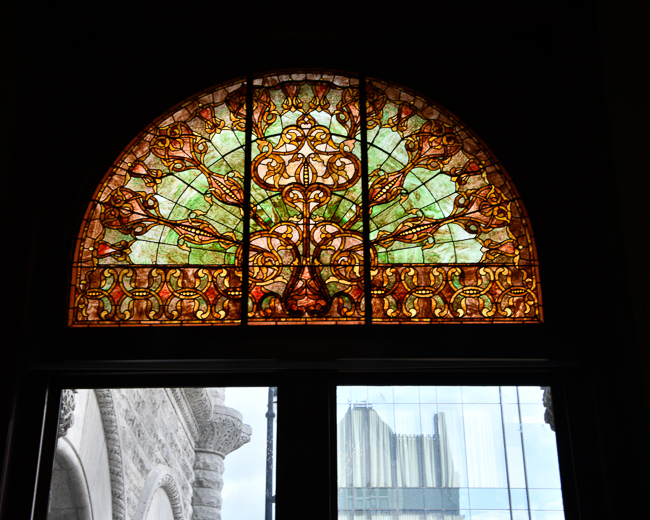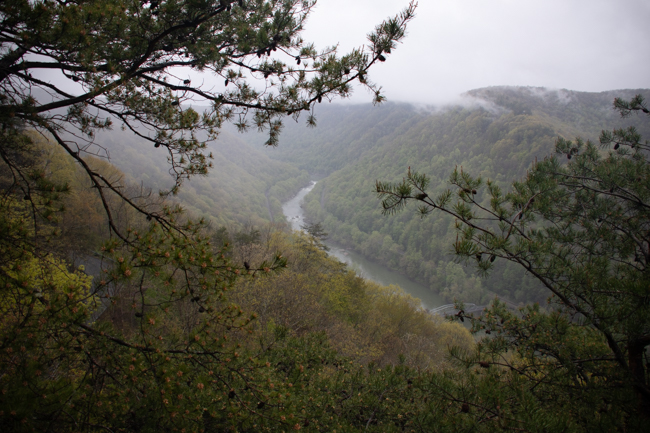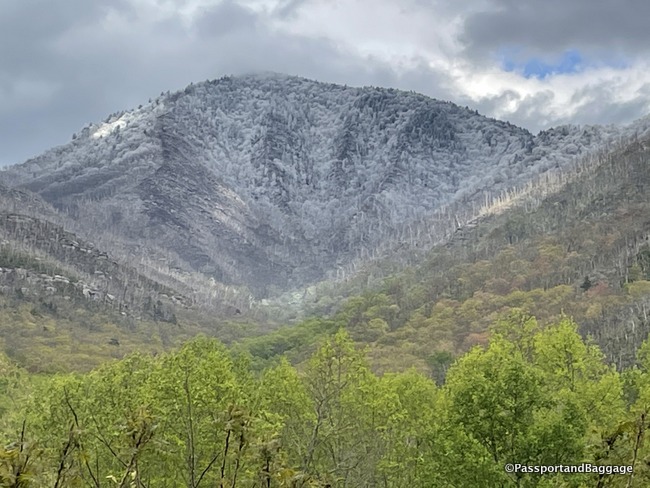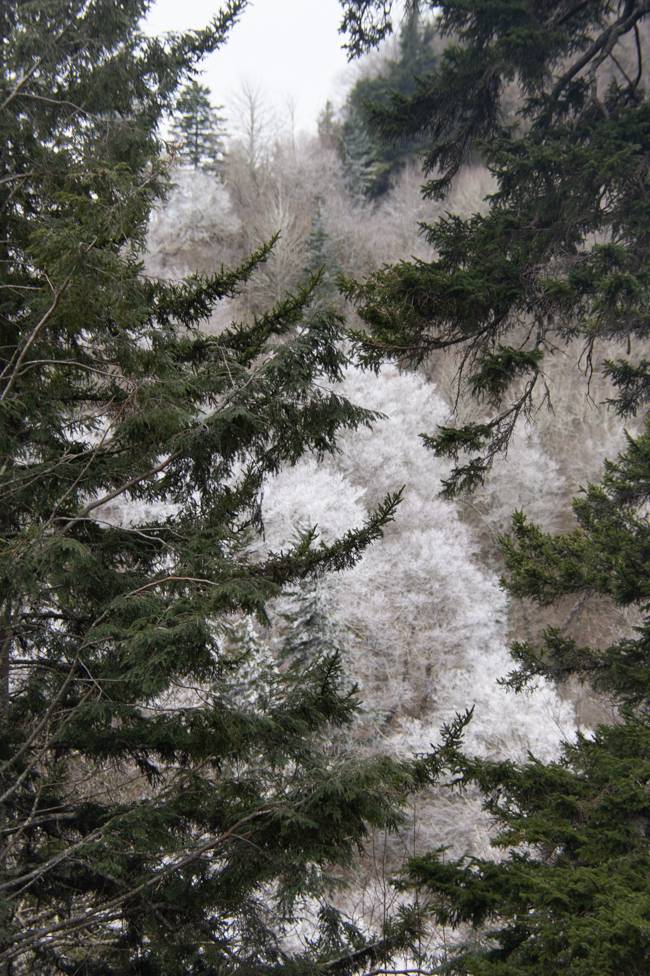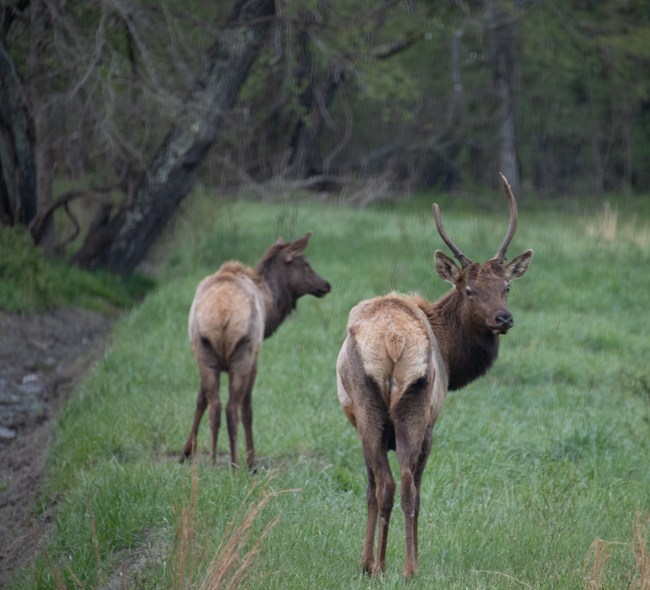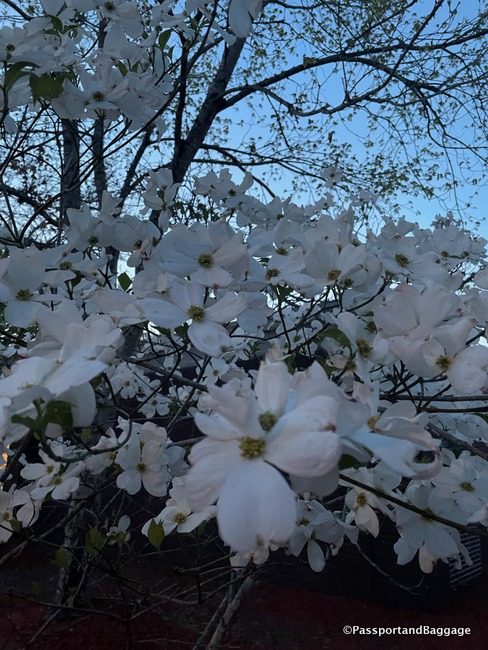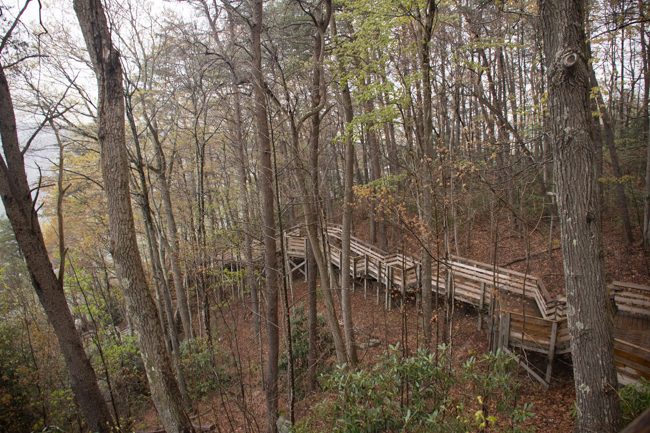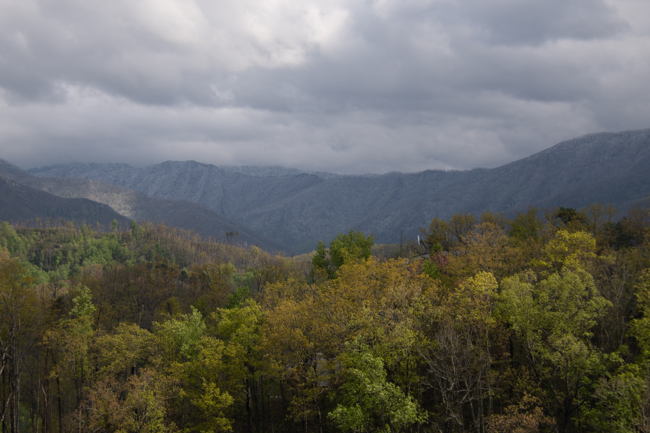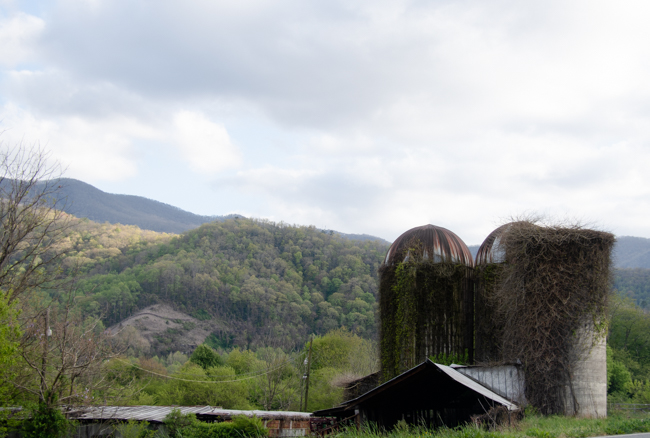March 2023
The Nashville Union Station and Trainshed were constructed in the 1890s as part of the Louisville and Nashville (L&N) Railroad’s construction program. Nashville Union Station was a major transfer station on the Louisville and Nashville, Chattanooga, and St. Louis lines. The station was designed by Richard Montfort, an engineer employed by the railroad. Montfort was trained at the Royal College of Science in Dublin, Ireland, and was influenced by the work of H.H. Richardson. The train station design is reminiscent of Richardson’s Allegheny County Courthouse in Pittsburgh, Pennsylvania.

The train shed once stood where this parking lot is today. The whiter strips of pavement are where the rails once were. The trainshed was demolished in 2001 after a fire.
Spanning a length of 200 feet, the Nashville Trainshed was the longest of the trainsheds built by the L&N in the 1890s, making it the longest single-span, gable roof structure constructed in the United States.
The adjoining train station was constructed in the Romanesque Revival architectural style using Bowling Green gray stone and Tennessee marble. The illustrations that graced the interior walls of the train station depict the agricultural, mechanical, and commercial pursuits of the State of Tennessee.
For seventy-eight years, thousands of passengers would arrive in Nashville via trains with such charming names as Dixie Flyer, Dixieland, Floridian, and the Carolina Special.
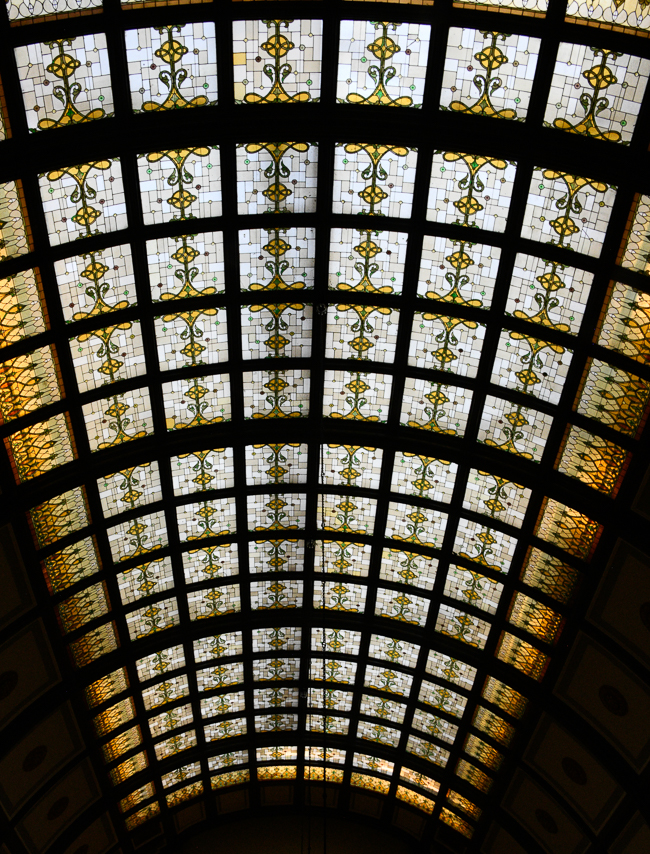
The 65-foot, barrel-vaulted lobby ceiling features gold-leaf medallions and 100-year-old, original Luminous Prism stained glass.
There are two bas-relief panels—a steam locomotive and a horse-drawn chariot ̶ at each end of the lobby.
There were seven lines entering the station. Four were for freight, and the others were passenger lines. There was a small jail in the area between the two passenger trains for prisoner transfer. The most famous of these transfers was Al Capone on his way to the Georgia penitentiary. The Gym is now in the area where the jail once stood, but the hotel has at least left a small tribute. Keep in mind, no one would have been in the jail cell for as many days as there are red hash marks, but it is a nice nod to the use of the space at one time.
The station is now a hotel and the number-one wedding venue in Nashville. I had the pleasure of a 2nd-floor window with a view looking through one of the granite arches at the trains that ran by.

